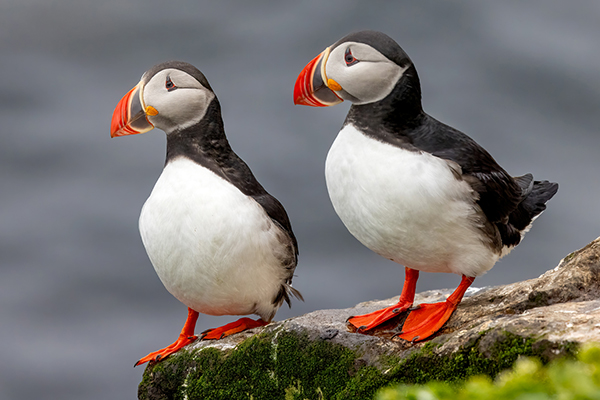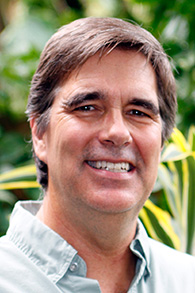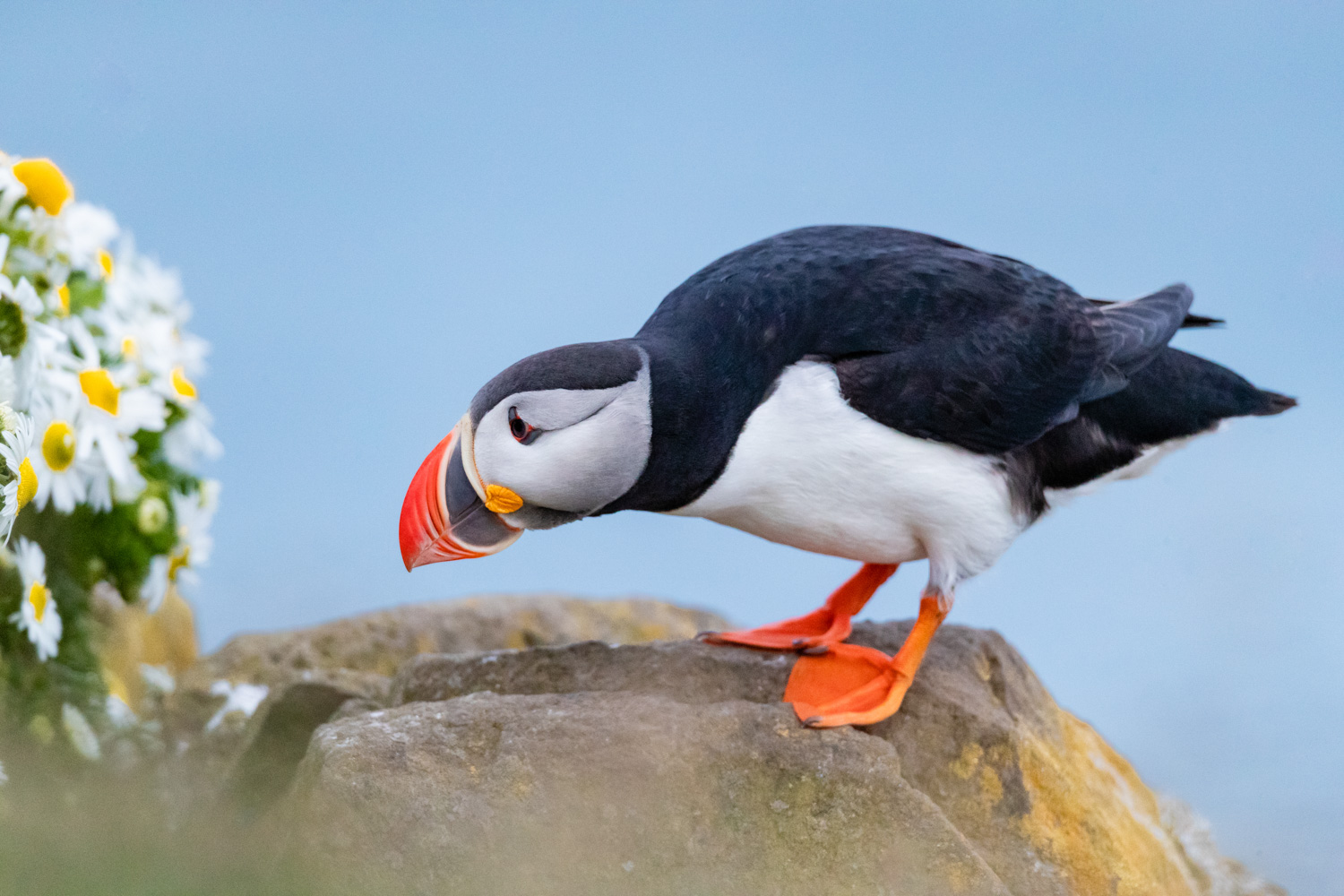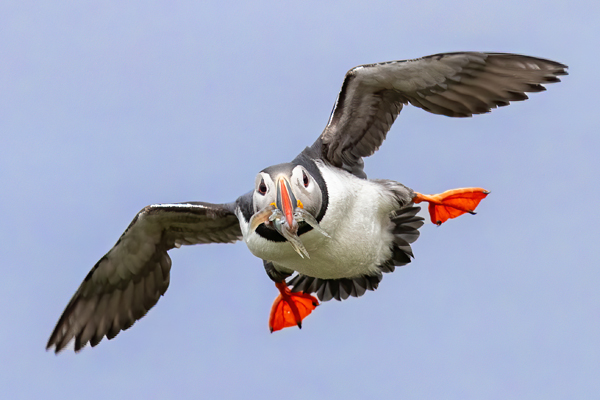This was my very first time visiting Iceland and I was looking forward to learning the ropes from my local Iceland pro co-leader Daniel Bergmann. I had seen so many nice images of the scenic aspect of the Island country. But this trip isn’t designed to photograph scenery. On this tour, we were on a mission to photograph Atlantic puffins and other seabirds on the cliffs of Grimsey Island. Grimsey is a small island approximately 40 kms, or a 3-hour ferry ride, off the northern coast of Iceland. It is so far north that the Arctic Circle crosses the northern part of the island. This isolation is why so many seabirds choose Grimsey to nest and rear their young. The island encompasses just a little over 2 square miles. But along its rugged cliffs, more than 100,000 Atlantic puffins roost and nest each year. And that is why we’re here.
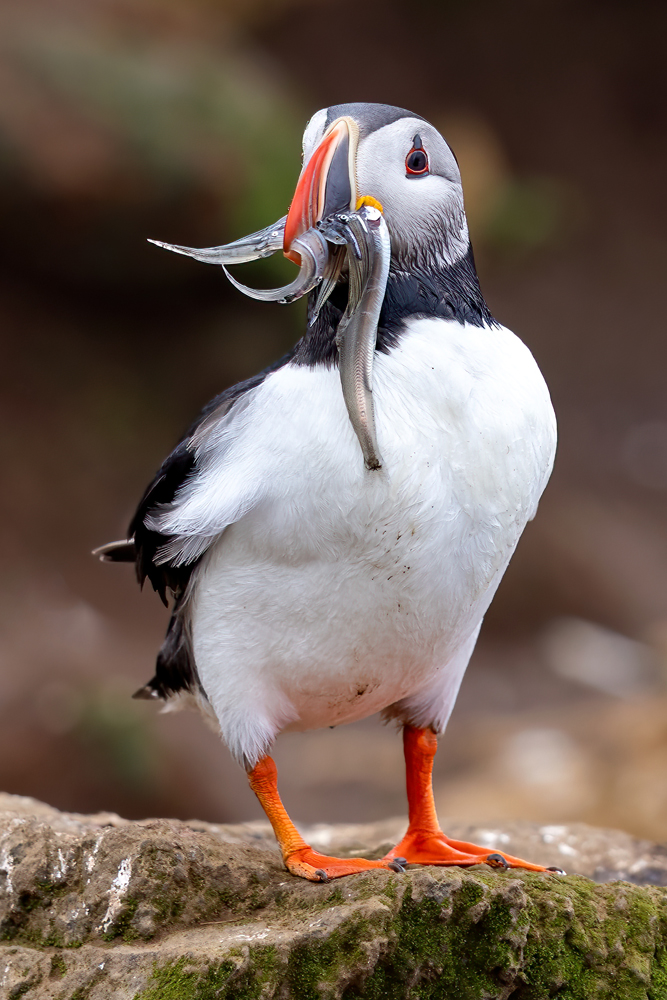
We saw our first few puffins from the ferry when we were about 30 minutes from the harbor. As we got closer, puffins became visible along the cliffs as far as we could see. We arrived in time for lunch at our guesthouse where we quickly gobbled it down so we could prepare our camera gear for the afternoon shoot. Being so far north, there is 24 hours of daylight—so really no need to rush. After lunch, we loaded into two vehicles and headed toward the southern tip of Grimsey where we found a small orange lighthouse to warn the fishermen to stay away from the unforgiving coastline. But as uninviting as the cliffs are to seamen, the opposite is true for the seabirds. Along the crags and outcroppings, we found nesting kittiwakes, fulmars, razorbills, and of course, lots of puffins. At this point, most are just standing around on the cliffs, which allowed us lots of opportunities for portraits and group photos of the colorful seabird. Since they weren’t really flying much, we couldn’t originally find any puffins with fish in their beaks—a shot that everyone wants. But moving a bit further along the cliff, we finally spotted one puffin standing there with a mouthful of fish. While we were there, the wind picked up a bit and groups of puffins seemed to react to that and fly out to sea. A short time later, they returned, one by one, with beakfuls of fish. So, we had plenty of opportunity to pick up on their flight patterns and hone our birds-in-flight skills. It takes a bit of practice to track these flying footballs with our cameras. They can easily move at 50 mph or faster. Add to that, the turbulence as they approach the windy cliffs can make these small birds challenging to photograph in flight. But other times, the wind worked in our favor as the birds would sometimes hover in place before landing. With a bit of fog rolling in, we headed back to the guesthouse for dinner. It was a successful first outing. But the best was yet to come.
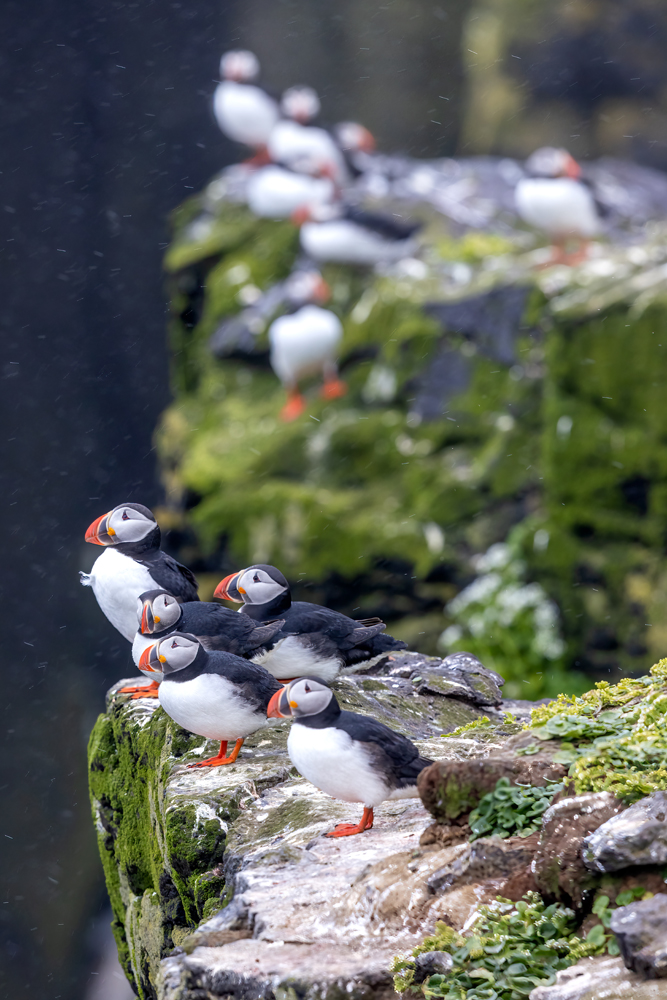
The weather on Grimsey can vary greatly. We had overcast skies much of the time, which is perfect for photographing birds with contrasting colors like black and white. The clouds act as a giant diffuser which evens out the light and eliminates harsh shadows. Sometimes, there was a light rain, not hard enough to keep us from shooting. And occasionally, fog would shroud the tiny island, but it never lasted long. The constant wind would push any weather through in short order.
Many robust puffin cliffs can be easily accessed by foot from our centrally located guesthouse. So, there is a lot of freedom while shooting on Grimsey. We drove to various sites every morning and afternoon. But those so inclined could walk wherever they wanted to go. You really can’t get lost on Grimsey.
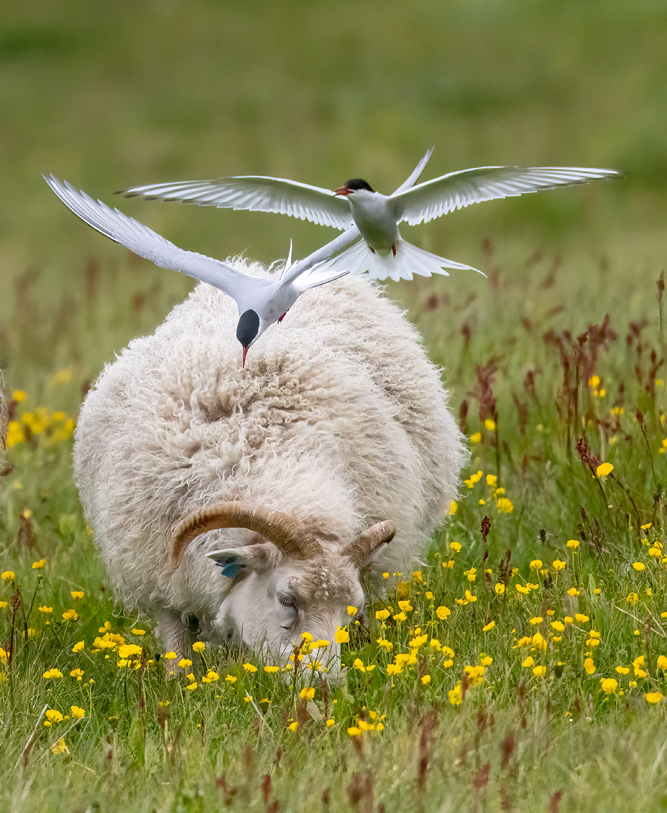
The next few days found us traveling both north and south. Those who wanted could visit the Arctic Circle at the north end of the island. Besides the puffins, arctic terns were also nesting in the island’s grassy fields. They were quick to let wandering sheep know when they were getting too close. Even when on obvious trails, the terns also wouldn’t hesitate to let humans know that the fields belonged to them.
About 3 days in, the wind died down for a few hours. We rushed to a small freshwater pond where kittiwakes and terns were often seen bathing. With the winds calm, we now had the chance of reflections on the water as the terns made many low passes to drink. This was another of those situations in nature photography where you need to shoot it when you see it. This calm period only happened once while we were there and was our only opportunity to capture tern reflections.
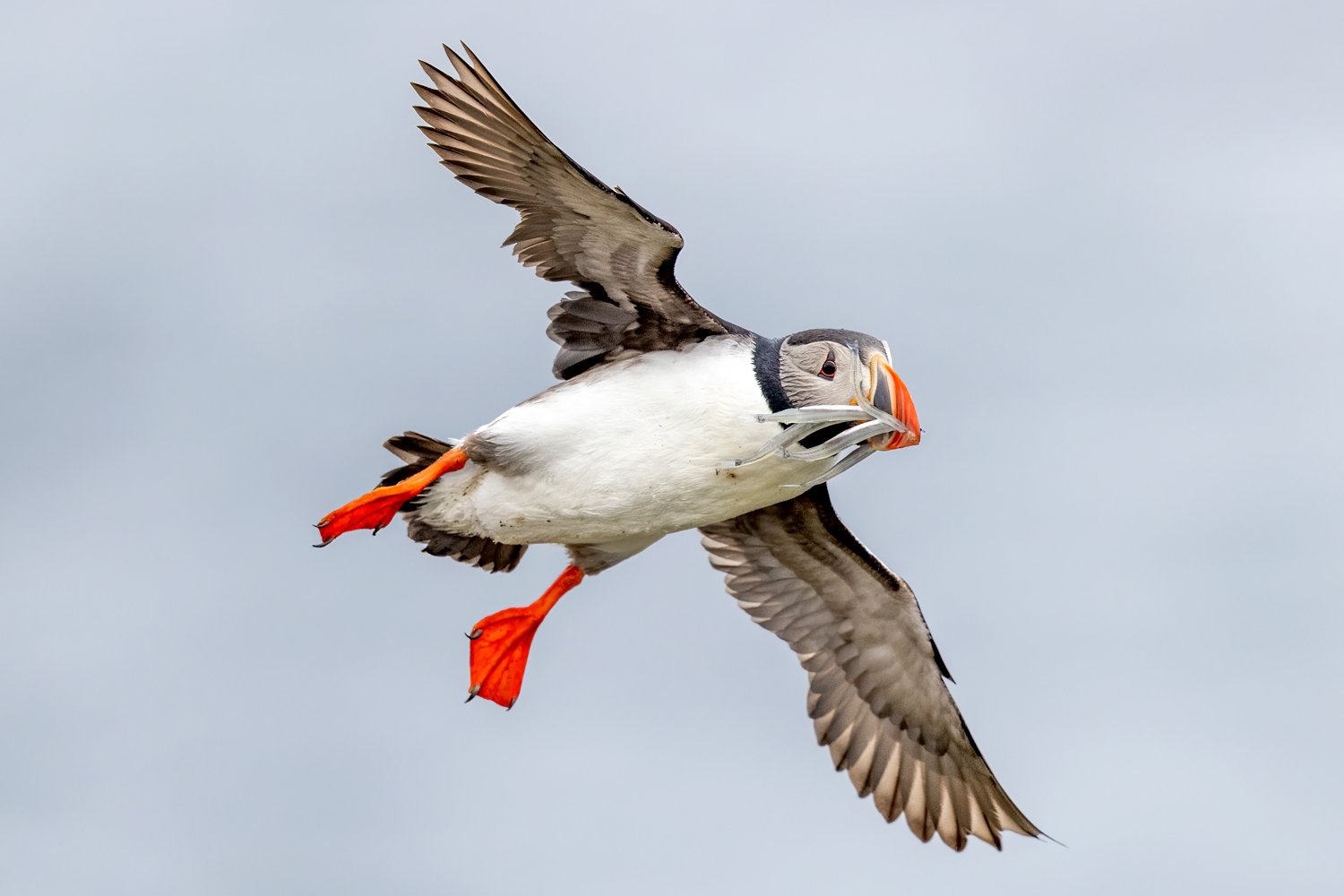
We had lots of success photographing the puffins over the first days of the tour. But the best shooting happened on our final day. The wind had shifted direction and was now blowing in strongly from the west. We headed north to the cliffs on the west side of the island. And we were rewarded for this move. Up until now, when we were shooting puffins in flight, they were coming in individually or in small numbers. This worked out fine and everyone got plenty of nice flight shots. But when we reached the cliffs on our final day, I don’t think it is an exaggeration to say the puffins were swarming. For the entire morning, the puffins left the cliffs to go fishing and returned with mouthfuls of fish—over and over again. We finally stopped shooting because fingers were getting cold, and lunch was calling. After lunch, we still had about 2 hours before we needed to head to the dock to catch our ferry back to the mainland. A few hardy souls decided to head back out to the cliffs and shoot non-stop puffins in flight until we were forced to head back to meet the ferry. It was an incredible end to an incredible trip.
Nowhere else can you have such intimate encounters with this colorful little seabird. And there is no better place to photograph them in the world.
